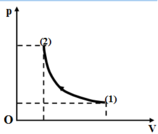Read the following passage and mark the letter A, B, C or D on your answer sheet to indicate the correct answer to each of the questions.
This rapid transcontinental settlement and these new urban industrial circumstances of the last half of the 19th century were accompanied by the development of a national literature of great abundance and variety. New themes, new forms, new subjects, new regions, new authors, new audiences all emerged in the literature of this half century.
As a result, at the onset of World War I, the spirit and substance of American literature had evolved remarkably, just as its center of production had shifted from Boston to New York in the late 1880s and the sources of its energy to Chicago and the Midwest. No longer was it produced, at least in its popular forms, in the main by solemn, typically moralistic men from New England and the Old South; no longer were polite, well-dressed, grammatically correct, middle-class young people the only central characters in its narratives; no longer were these narratives to be set in exotic places and remote times; no longer, indeed, were fiction, poetry, drama, and formal history the chief acceptable forms of literary expression; no longer, finally, was literature read primarily by young, middle class women.
In sum, American literature in these years fulfilled in considerable measure the condition Walt Whitman called for in 1867 in describing Leaves of Grass: it treats, he said of his own major work, each state and region as peers "and expands from them, and includes the world ... connecting an American citizen with the citizens of all nations." At the same time, these years saw the emergence of what has been designated "the literature of argument," powerful works in sociology, philosophy, psychology, many of them impelled by the spirit of exposure and reform. Just as America learned to play a role in this half century as an autonomous international political, economic, and military power, so did its literature establish itself as a producer of major works.
The word “it” in the second paragraph refers to______.
A. the population
B. American literature
C. the energy
D. the manufacturing














